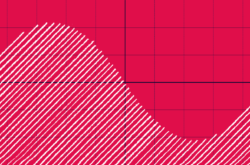There’s nothing quite as exciting as discovering a hidden message or a new piece of music embedded within a recording you’ve listened to many times over.
For decades, Easter eggs have been a popular way for artists to reward dedicated listeners, adored by progressive acts like Tool to pop icons like The Beatles. In this article, let’s explore three ways you can hide Easter eggs in your own music.
1. Craft a secret track
Did you know that Tool’s album 10,000 Days actually has a 12th track? Its three songs “Viginti Tres,” “Wings for Marie,” and “10,000 Days” can be combined to create an entirely new song. “Wings for Marie” and “10,000 Days” have breakdowns that fit together perfectly, at 4:13 and 9:14 respectively. When superimposed and aligned so that the breakdowns sync in a DAW, the two songs create an entirely new piece of music.
To do this in your own music, try splitting a session you’re working on into two (or more) parts by saving as multiple separate projects. Then, leave an identical section in each, but try to make the songs completely different otherwise.
2. Add a hidden ending
System of a Down’s “Aerials,” Nirvana’s “Rage,” and many other tracks include a hidden ending by simply adding a stretch of silence between the main song and a bonus Easter egg. This can be easily achieved in your own productions; simply add several measures of silence after your track concludes, and then insert your hidden ending. This was much more common in the era of CDs – unfortunately, services like SoundCloud that show users the full waveform will spoil the surprise.

Adding a hidden ending is a simple process in most DAWs
3. Hide an image
What if you wanted to be more subtle with your hidden message? Aphex Twin and Venetian Snares are probably most well known for hiding images in their music. These Easter eggs are only visible when you run the track through a spectrogram.
Using freeware like Coagula, you can convert an image to a waveform and then put it in a spectrogram (like the one featured in iZotope’s RX 7). Once you import your image and are ready to render, use the Sound → Render Without Blue Noise option.
 Our image of choice in Coagula
Our image of choice in Coagula
Now, you can view the .wav file in a spectrogram and see your image.
RX 7’s spectrogram reveals our image
Are there any other cool ways to add Easter eggs in music? Let us know in the comments below.
September 12, 2019



